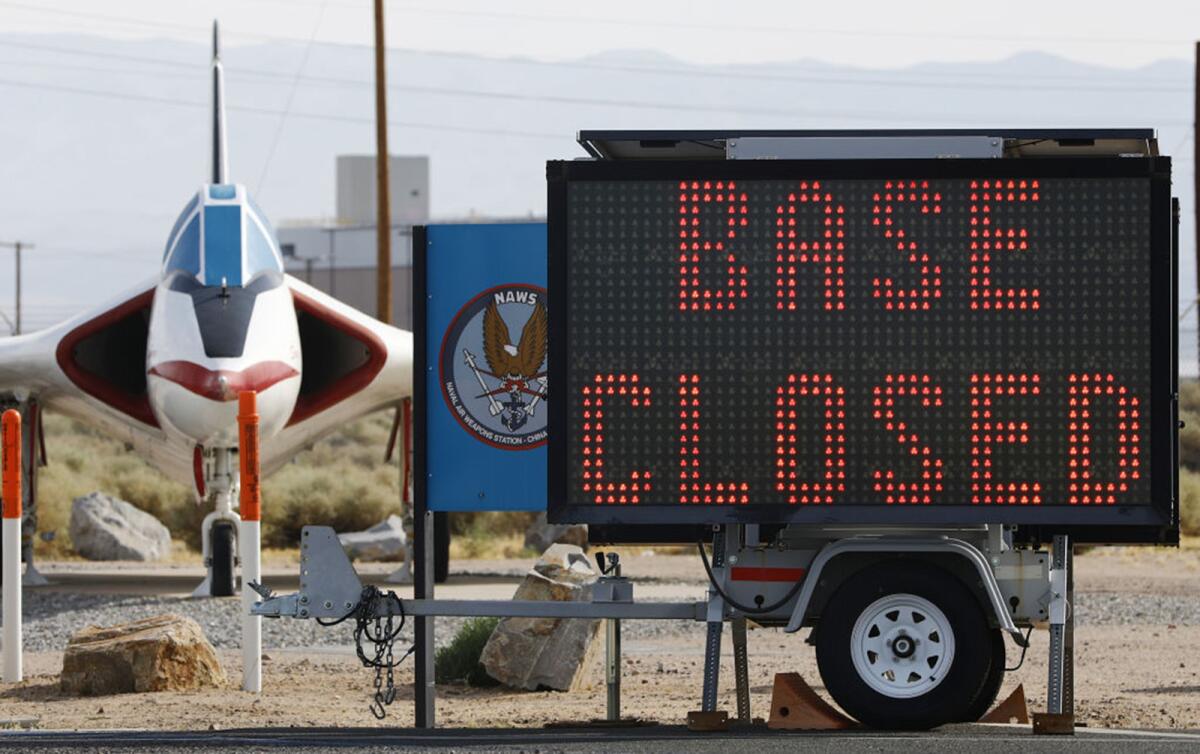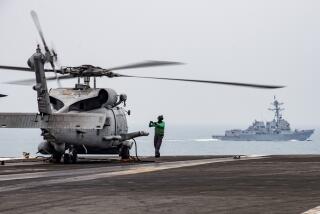Ridgecrest earthquakes caused up to $5 billion in damage to China Lake naval base

- Share via
Two months after twin earthquakes rocked the small towns of Ridgecrest and Trona, details are emerging about the damage done to the nearby China Lake Naval Air Weapons Station, the Navy’s largest base for developing and testing weapons of warfare.
The base was so badly damaged that officials are suggesting several buildings be demolished and replaced. The cost of returning the facilities to normal could top $5 billion, according to Navy documents.
The recommendations still have to be approved by Congress and President Trump, according to Lee Saunders, a spokesman for the Southwest division of the Naval Facilities Engineering Command.
The China Lake naval station is less than 10 miles from the epicenters of the Ridgecrest quakes that rocked the region on July 4 and July 5. The base was open only to essential personnel after the first earthquake, a magnitude 6.4. But following the larger 7.1 temblor, the facility was evacuated.
Two weeks after the quakes, the base told personnel in a Facebook post that building use remained limited and many services had been relocated. Information about damage to the base has been sparse since.
“A degree of normalcy has outwardly returned to the Western Mojave Desert,” the social media post said. “Nevertheless, restoration and repair of infrastructure and facilities diligently continues throughout the installation.”
Naval engineers have worked to repair facilities on the base so employees and their families could return, but according to a report this week in the Navy Times, the base has still not been deemed “fully mission capable.”
The latest report shows that officials assessed all buildings, utilities and facilities — 3,598 structures in all — for 13 days after the earthquakes and found damage totaled $5.2 billion. Replacing buildings alone would cost $2.2 billion, but officials also must replace or repair specialized equipment, furniture, machine tools, telecommunication assets and other facilities, the document shows.
Capt. Mark Edelson, a commanding officer for the Naval Facilities Engineering Command’s Southwest division, could not immediately be reached for comment, but he told the Navy Times this week that more than half of the base’s damaged buildings were built before 1980 and did not meet seismic standards.
The base’s Hangar 3, which holds advanced weaponry and aircraft, suffered structural cracking. The Michelson Laboratory, which houses a unit that tests advanced weapons technology, was declared unsafe after major cracks and other signs of “stress” were found in its foundation, columns and beams, the Navy Times reported.
More to Read
Sign up for Essential California
The most important California stories and recommendations in your inbox every morning.
You may occasionally receive promotional content from the Los Angeles Times.











